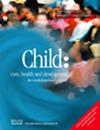Understanding School Presenteeism and Absence in Adolescents Affected by Chronic Musculoskeletal Pain: A Qualitative Study
Abstract
Background and Objectives
Absenteeism among adolescents experiencing chronic pain is a critical issue, and factors influencing absence have been identified as an evidence gap. Existing research overlooks aspects beyond attendance, such as presenteeism, reflecting adolescents' school functioning before becoming absent. This novel qualitative study sought to identify the influencing factors on presenteeism and absence from school in adolescents (11–18 years) experiencing chronic pain, through exploration of adolescent and parent perspectives.
Methods
This study conducted a secondary analysis of qualitative data using semi-structured interviews and a timeline drawing from 21 adolescents treated for chronic musculoskeletal pain and 21 parents. Data regarding school experiences were extracted and analysed using the six stages of thematic analysis, identified by Braun and Clarke. Initial codes were identified manually, discussed and validated by all authors in a face-to-face meeting.
Results
Thematic analysis of the data identified three themes: (1) understanding the unseen struggle, (2) the feeling of belonging and (3) navigating transitions.
Conclusion
A key finding was the importance of adolescents feeling understood and supported by their peers and teachers throughout their education. Receiving validation of their symptoms, despite the invisible nature of chronic pain, affirmed a sense of security at school, contributed to a more positive school experience and improved adolescents' reported attendance. This has important practice implications in healthcare and education, in validating the adolescents' struggle, fostering a sense of belonging through shared goal setting and advocating for their voices to be heard.

 求助内容:
求助内容: 应助结果提醒方式:
应助结果提醒方式:


